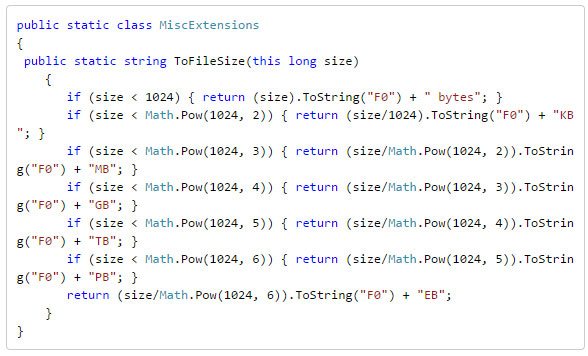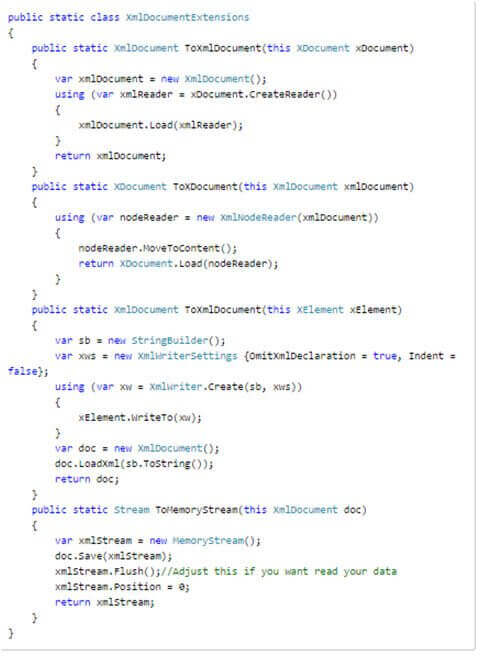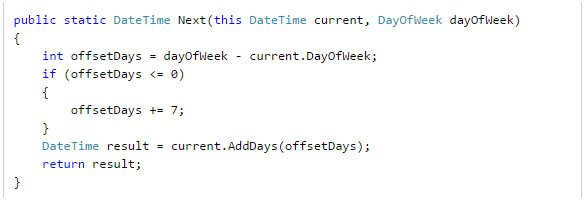Special extension methods were released in C# 3.0. Developers have continuously been looking for ways to extend classes to every coding and got top most preferable extension methods for .net development.
Is there a class that just doesn’t do enough for you? Is it true that you always wanted to add more onto a Date-Time class, but somehow you couldn’t? Things which were not possible earlier can be true with extension methods that C# 3.0 unveiled.
What are extension methods?
Extension methods empower developers to build new functionality for existing types without altering the actual type itself. The major characteristics of an extension method are:
- The method needs to be static
- The class needs to be static
- The method’s initial parameter in the signature should have the “this” declared
Top useful .net extension methods are:
1. ToFileSize-Type: Long
It was required by developers because it was easier to read the number. Developers can convert it into formatted number with the apt size metric.

2. ToXmlDocument()/ToXDocument() – Type: XmlDocument or XDocument
Your developer can’t explain how many times he needs to convert an XmlDocument into an XDocument and vice versa for LINQ use. The following handy extension methods are intended to save huge time.

3. Between() – Type: Daytime
It is used to check if a date is between two dates.

4. CalculateAge() – Type: DateTime
As the name suggests, it is used for calculating age.

5. Workingday()/Isweekend()/NextWorkday() – Type: Datetime
It is used for determining if a date is a working day, weekend, or finding the next upcoming workingday.

6. Next() – Type: DateTime
It is used for determining the Next Date by passing in a DayofWeek.

7. Has()/Is()/Add()/Remove() – type Enum
This extension method is great when an enumerated type is flag instead of full items.
public static bool Has<T>(this System.Enum type, T value) { try { return (((int)(object)type & (int)(object)value) == (int)(object)value); } catch { return false; } } public static bool Is<T>(this System.Enum type, T value) { try { return (int)(object)type == (int)(object)value; } catch { return false; } } public static T Add<T>(this System.Enum type, T value) { try { return (T)(object)(((int)(object)type | (int)(object)value)); } catch (Exception ex) { throw new ArgumentException(string.Format("Could not append value from enumerated type '{0}'.", typeof(T).Name), ex); } } public static T Remove<T>(this System.Enum type, T value) { try { return (T)(object)(((int)(object)type & ~(int)(object)value)); } catch (Exception ex) { throw new ArgumentException(string.Format("Could not remove value from enumerated type '{0}'.", typeof(T).Name), ex); } }